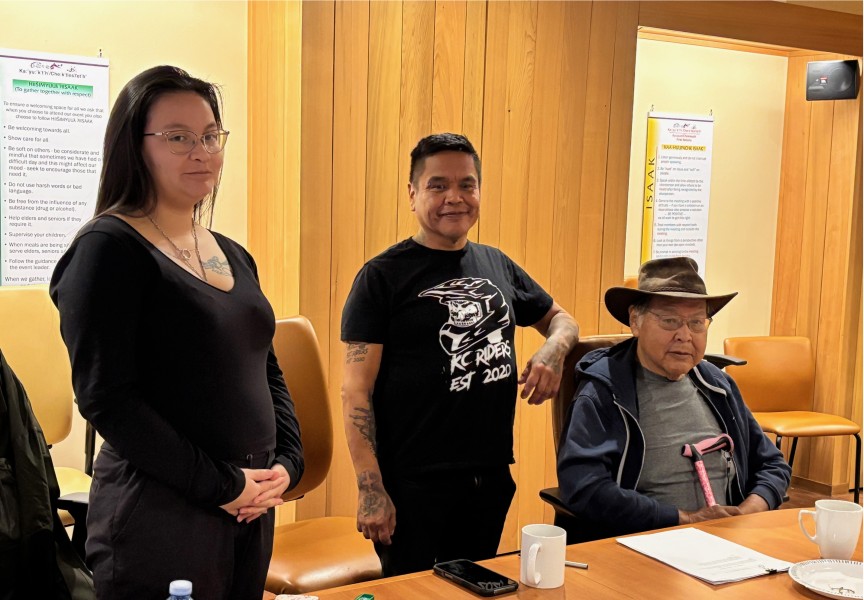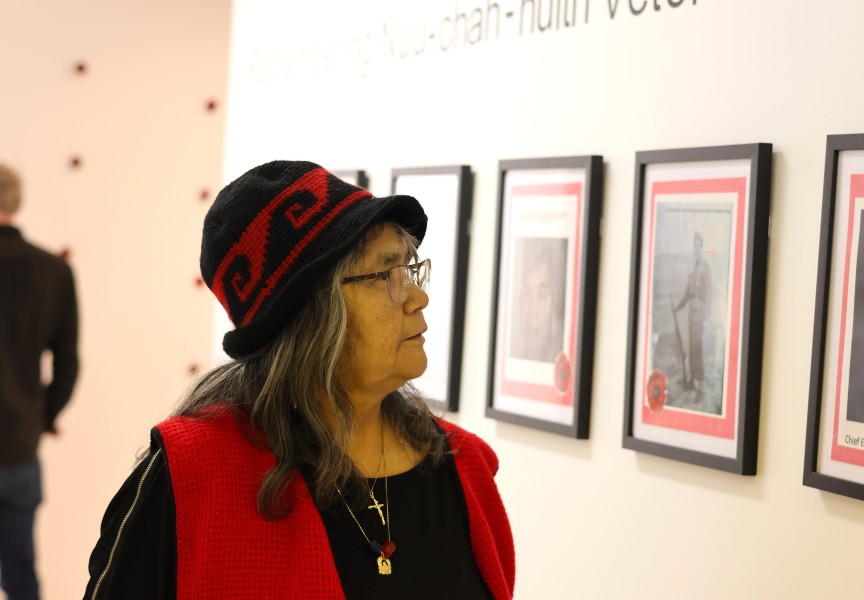Tania Dick is the first aboriginal graduate of the Nurse Practitioner program at the University of B.C. She has many of the powers and skills of a family physician, and she brings her passion for aboriginal health to the Nuu-chah-nulth Tribal Council Health Outreach Program based at the Bread of Life soup kitchen in uptown Port Alberni.
A member of Dzawada'enuxw First Nation from the village of Kingcome Inlet, Dick graduated as a Registered Nurse (RN) from the program at Kwantlen University in 2003 and immediately plunged into the complex world of First Nations health care.
“Most of my RN work has been on-reserve in First Nations communities,” Dick said.
Beginning with several years of hospital work in Bella Bella, she moved over to her ‘Namgis father’s home community of Alert Bay and soon found herself navigating a professional triangle between Bella Bella, Alert Bay and Massett on Haida Gwaii.
“I was also doing some community nursing in Kingcome Inlet, on the side, because they had gone without a nurse for almost three years,” Dick said.
After a few years, Dick said she felt she had to upgrade her skills to address the lack of health care in remote communities. The trigger, she said, was her own community of Kingcome.
“It’s so isolated and they have zero access to health care services. Primary care services were limited to twice a month; in the wintertime, maybe once a month or once every two months. Partly, it was just seeing the chronic disease issues; there are a lot of crisis-level situations on reserves. The capacity for primary health care, everywhere I went, you could see the gaps.”
In one sense, that lack of resources served to prepare Dick for her future as a Nurse Practitioner (NP). In small hospitals, when it comes to staffing the Emergency Room, it’s all hands on deck. As an RN, Dick picked up ER skills that proved invaluable when dealing with health crises in remote communities.
Living that balancing act between nursing and crisis management convinced her she was ready to take the next step in her career. Dick is well aware that improving health for B.C.’s First Nations people is going to require a quantum shift in attitudes in both the aboriginal and non-aboriginal communities.
“We’re in such crisis, due to our health states, that we’ve normalized it, amongst ourselves and within society. We’ve learned to live without and we’ve learned to live with crisis.”
Dick had the option of completing her Master’s degree by distance education while continuing to work as an RN. Feeling the need to be able to focus all her attention on her studies, she opted to move to Vancouver and attend UBC full time, graduating in 2010.
With her new qualifications, Dick is able to provide a far greater level of care for her clients.
“The difference is, as Nurse Practitioners, we can assess our patients and make a diagnosis, which RNs can’t. We can write prescriptions, order lab work, interpret lab results and follow up on lab work.”
So when a patient presents with symptoms of diabetes, which is a common chronic health condition in remote First Nations communities, the NP is qualified to make the initial diagnosis and prescribe medication, then monitor the effectiveness of the medication and make any adjustment to dosage. No specialist, no physician required. The NP also undertakes to educate the patient in monitoring symptoms and managing diet, as well as making any necessary lifestyle changes.
To an outsider, increasing the number and scope of the NP program would appear to be a no-brainer, particularly when it comes to providing health care services to remote communities. But while the province has increased the number of job opportunities for NPs, it has not moved to increase the number of students admitted into the program each year. Meanwhile, across the province, there continues to be a significant discrepancy between the allocation of funding for aboriginal communities and the general community.
Dick said she has opted to stay out of the politics, but notes, “Before I started my job, there were still a lot of NPs working as RNs because the jobs weren’t there.”
With a dozen job offers in hand, Dick opted to join the NTC program.
“I like the fact that this is a large aboriginal organization and has quite a significant nursing program. That stood out for me; my passion is aboriginal health, so it wasn’t a hard choice.”
At the Bread of Life clinic, Dick and her RN colleagues see patients on a walk-in basis until noon, along with regular clients who are dealing with chronic health issues. Then it is time for outreach.
“In the afternoon, we have a list that we split up between the nurses. So I have a handful of people I will be looking for. They need to get lab results, I have to check medication responses, etc., etc., etc. A lot of the work we do is harm reduction, because of the high-risk lifestyle of the clientele.”
Clinic staff provide a needle exchange for intravenous drug users along with clean pipes for smoking crack. The goal is to reduce the risk of disease while at the same time offering a measure of education, “to chip away at some lifestyle changes.”
Many of these clients suffer the concurrent disorder of mental illness plus drug addiction. It makes them less diligent about their own personal health and wellness, Dick explained.
“You have to maneuver through those behaviours and thought processes to try and reduce the harm and get them to be more compliant with the health plan. That’s the kind-of magic of this kind of street nursing and harm reduction nursing.”
Dick added that the team works in close coordination with a full network of local mental health care providers.
One thing Dick has discovered is that there is only a very small core of aboriginal RNs – less than 100 – in B.C. That is despite the glaring need for RNs in First Nations communities.
Currently, there are large numbers of aboriginal people certified as Care Aides and Licensed Practical Nurses who could conceivably make that next step to the RN level.
Once again, however, Dick said it is going to take a major attitude shift to convince young First Nations students that they have the aptitude and the ability to break that ceiling and take on a four-year degree program.
“I remember when I did my nursing degree and actually finished it with a 4.3 [out of five] grade-point average, but I had this Imposter Syndrome for two or three years where I felt that somebody is going to find out I tricked them. That’s just kind of an inherited belief – generational issues from the residential schools, in part.”
Not only was Dick the first aboriginal graduate of the UBC NP program, her mother was the first aboriginal RN grad for the school. Dick said she had mixed feelings about the mother-daughter accomplishment.
“They [UBC] wanted to do this big thing about it, but more and more I thought, ‘It’s cool, but it’s kind of embarrassing. It’s 2010 and you’ve graduated one aboriginal from a Master’s program as a nurse practitioner.’”
That sense of urgency has made Dick more determined to help young aboriginal students embrace the upper levels of the health care field.
“We have to work harder; we have to change the system to make it more accessible to our kids. And we have to change what we do in our community to help build those children up – or anybody – to believe they can do it, that it is possible, that the ceiling does not exist.”






